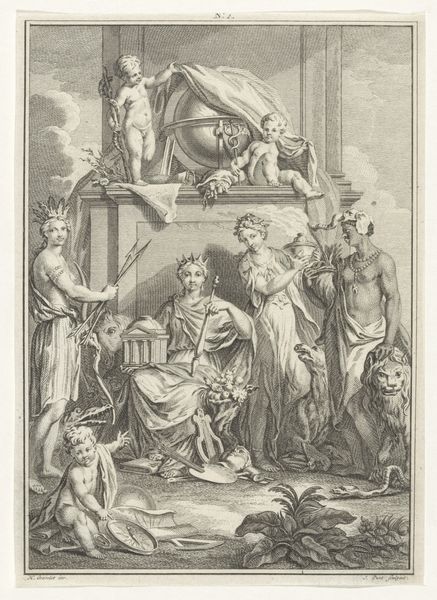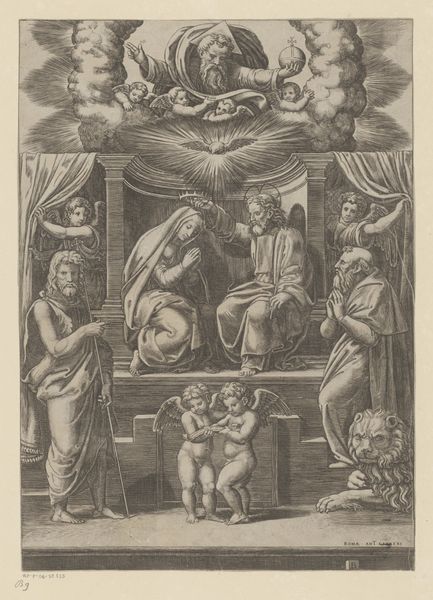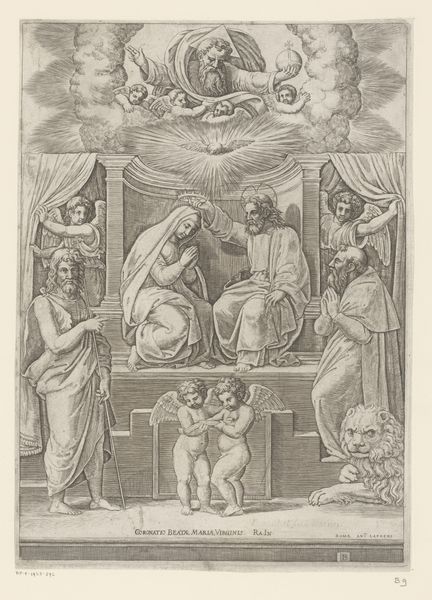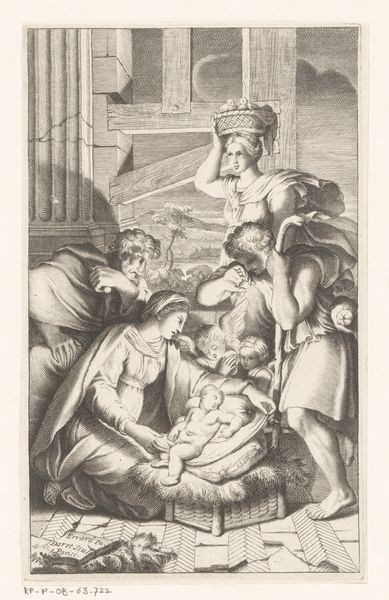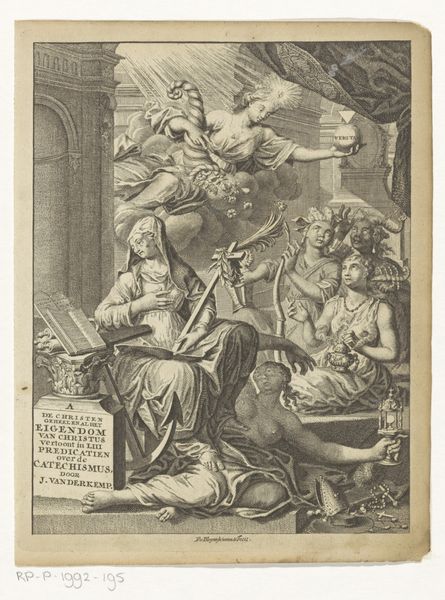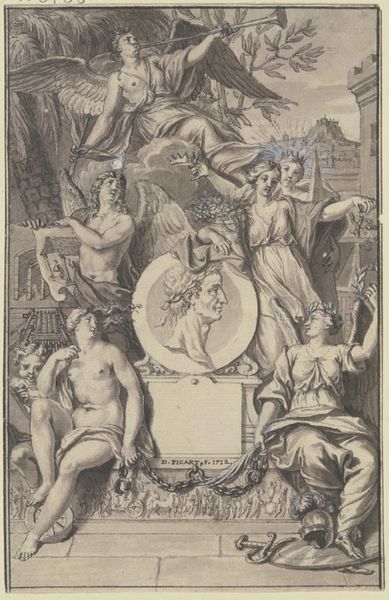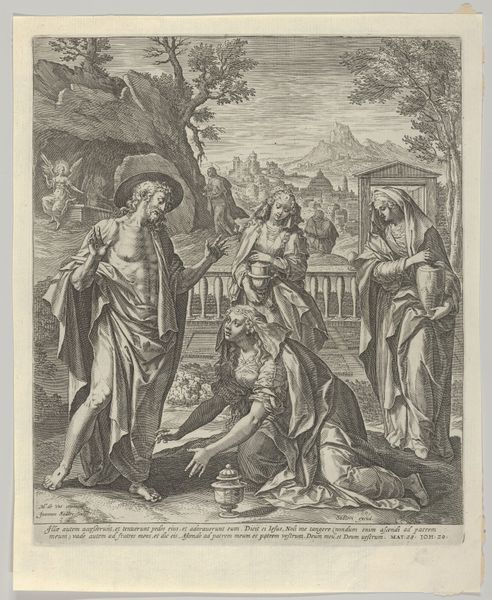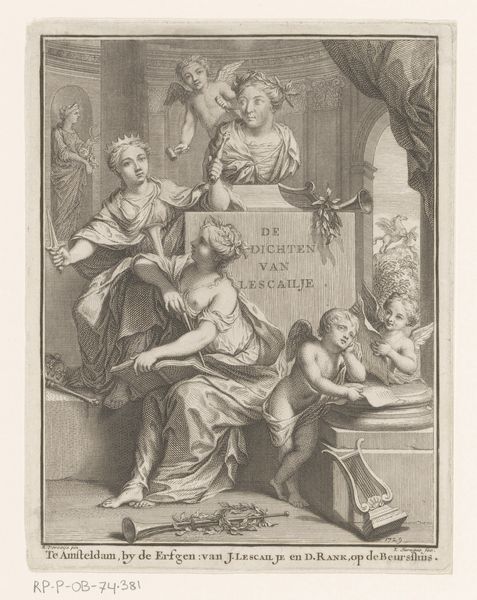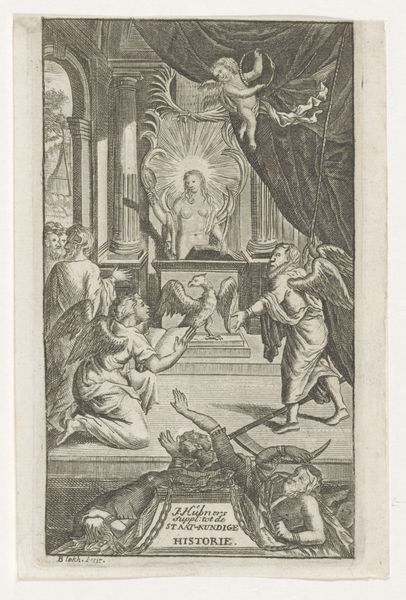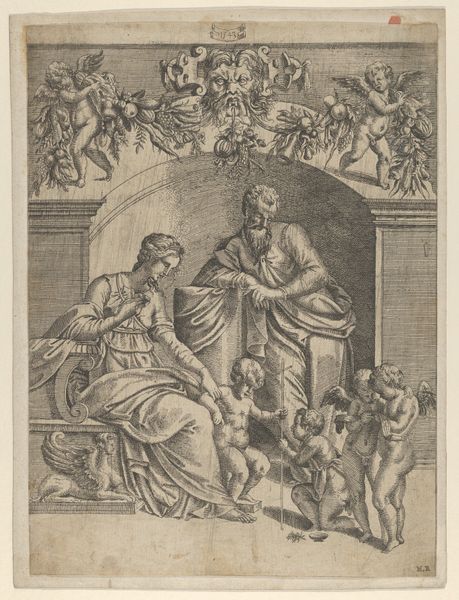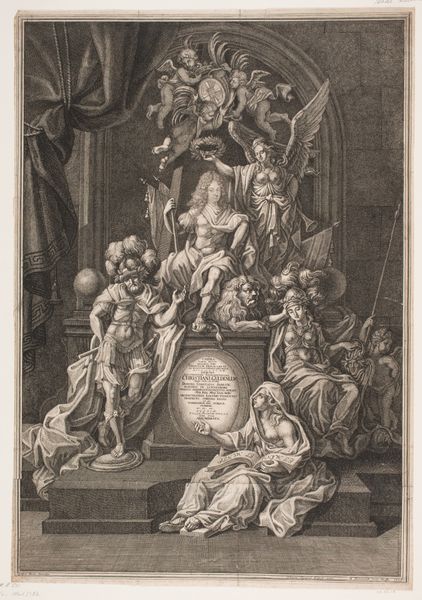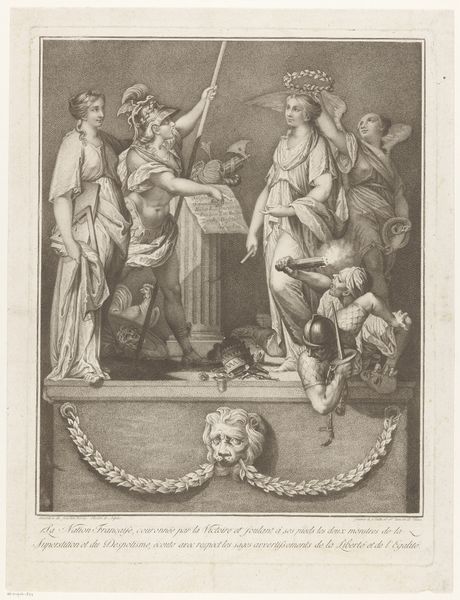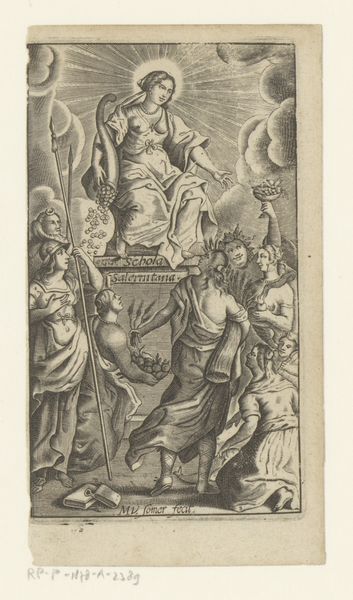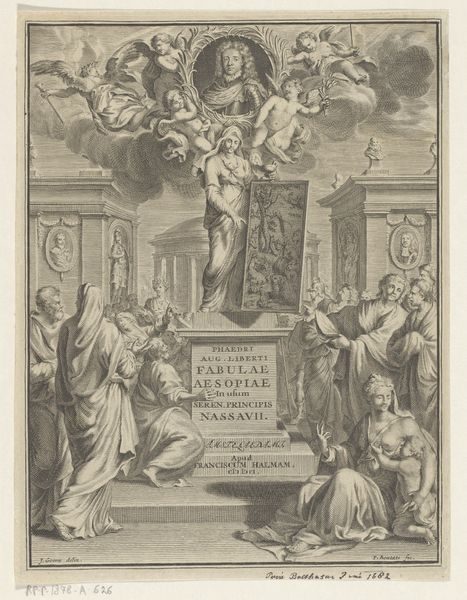
print, engraving
#
pencil drawn
#
toned paper
#
light pencil work
# print
#
pencil sketch
#
charcoal drawing
#
charcoal art
#
personal sketchbook
#
pencil drawing
#
portrait drawing
#
pencil work
#
engraving
Dimensions: 202 mm (height) x 135 mm (width) (plademaal)
Curator: Immediately, I’m struck by the rather overt symbolism. It's very theatrical, wouldn't you agree? Editor: Yes, a constructed drama! This engraving, "Allegory of the Four Continents", attributed to Odvardt Helmoldt de Lode, likely produced between 1726 and 1757, is heavy with coded messages reflective of its era. We see a gathering of female figures, classical architectural elements, and putti…a whole visual language to unpack. Curator: Precisely. Let’s start with the representation of the continents. I see a woman in a headdress, surely representing the Americas, and the regal, crowned figure seated at the center is clearly Europe. And is that Africa represented by the darker-skinned woman holding a vase? Editor: That's my interpretation. But it's not just representation, it’s about power dynamics. Europe sits enthroned, presiding over the others, a blatant display of colonialist ideology imbedded in art history. The tools scattered below further establish the colonizers’ values of trade, engineering, and conquest. Even the lion speaks of dominance, being the animal of conquest, next to the representative of Africa. Curator: Indeed. Notice, too, the cherubic figures up above with the globe; are they unveiling knowledge, or staking a claim? The European gaze is really defining the whole world order here. It raises uncomfortable questions about who is doing the defining, and who is being defined, even in art. Editor: These seemingly innocent images become powerful statements when viewed through the lens of critical theory. De Lode’s work becomes a case study of how artistic creation reinforces existing social structures. The continents aren't merely geographic locations; they are ranked in a hierarchy of perceived importance. Curator: Absolutely, and by recognizing these embedded power dynamics, we can hopefully dismantle them within contemporary art and beyond. It’s about acknowledging that this work exists not in a vacuum, but within a broader, often unsettling narrative of global history. Editor: Right. We have to see these visual strategies critically if we ever want to represent anything closer to a just world.
Comments
No comments
Be the first to comment and join the conversation on the ultimate creative platform.
